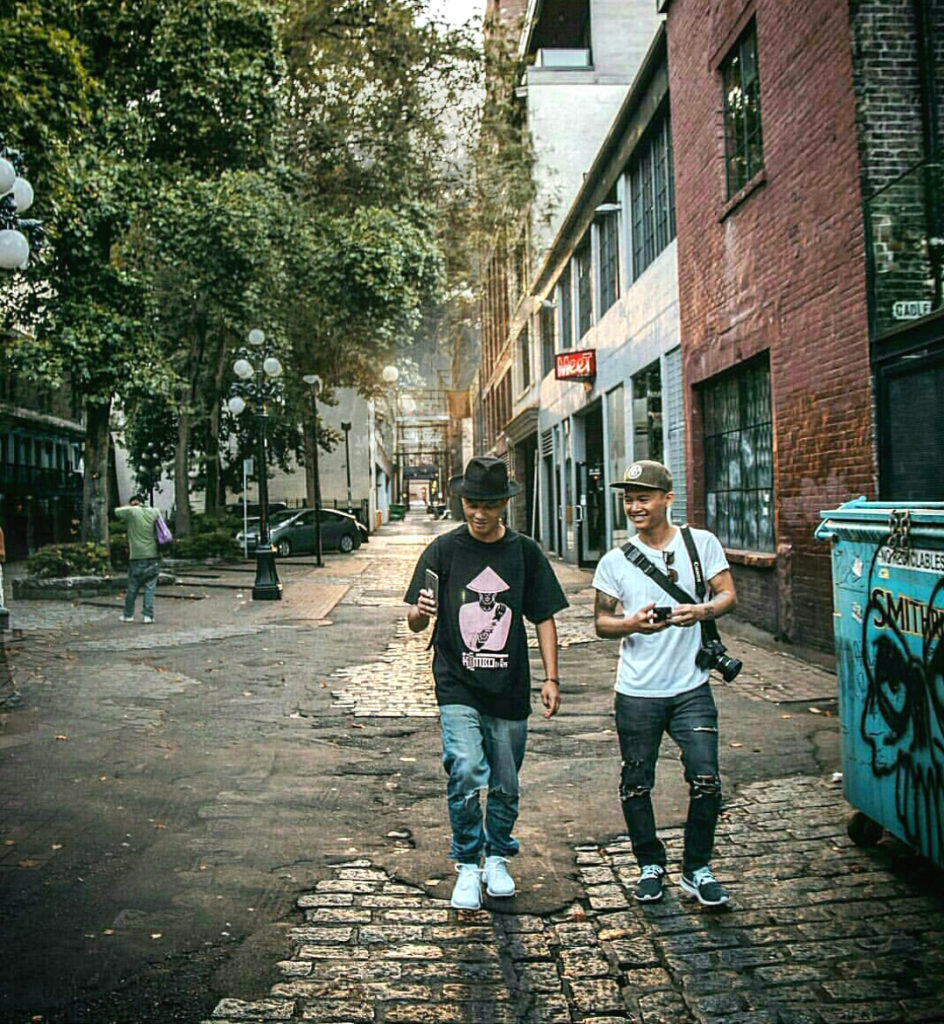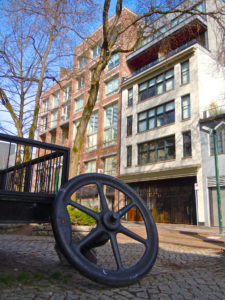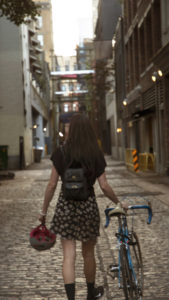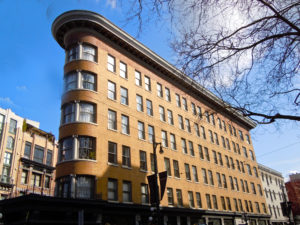
Text by Mary L. Peachin with photos compliments Gastown.org
Vol. 21, No. 4, April, 2017
Blood covered the wooden planks of the narrow alley. After a day of butchering cattle to provide Vancouver with the freshest cuts of beef, the butcher would wash the floor flushing bloody runoff onto the planks of what would become known as Blood Alley. Public executions, also held in Blood Alley Square, reinforced the name which provided a realistic depiction of Vancouver activities taking place in the 1800’s.
 A walking tour with John Atkin, local historian and author, magically transports the visitor to the Alley’s surrounding places. Many are long gone or have relocated while still enabling one to envision Vancouver’s fascinating history.
A walking tour with John Atkin, local historian and author, magically transports the visitor to the Alley’s surrounding places. Many are long gone or have relocated while still enabling one to envision Vancouver’s fascinating history.
Gaolers Mews in Gastown was once the county jail. Retro signs, and brick and cobblestone streets remain. The Mews, located behind Gassy Jack statue, is located on the corner of Powell and Alexander, a place where they join to become Water Street.
Inside Gaolers Mews there is a historical stairwell resembling a fire escape. An infamous red door, located at the top of the staircase belonged to popular Shebeen Whiskey Bar. Gaolers, next to the Cowboy Store, had more than one entrance. There was The Salty Tongue, an architecture firm, and a dog store.
According to Atkin, Gassy Jack, in spite of having access to old growth forest with trees averaging 300 feet tall and eighteen feet wide, decided to build a saloon rather than the planned lumber mill.
 The name Gastown came into use in 1867 when Captain John ‘Gassy Jack’ Deighton, a Fraser River pilot turned saloon keeper, erected his Globe saloon in Luck-Lucky. During Victorian times the term ‘to gas’ referred to talking a lot. As the first settler on the site Deighton had a grove of maple trees close to Stamp’s Mill (near the current base of Gore Street) plus the help of eager workers living near the shores of Burrard Inlet. By 1895, Gastown was the warehouse district of the city.
The name Gastown came into use in 1867 when Captain John ‘Gassy Jack’ Deighton, a Fraser River pilot turned saloon keeper, erected his Globe saloon in Luck-Lucky. During Victorian times the term ‘to gas’ referred to talking a lot. As the first settler on the site Deighton had a grove of maple trees close to Stamp’s Mill (near the current base of Gore Street) plus the help of eager workers living near the shores of Burrard Inlet. By 1895, Gastown was the warehouse district of the city.
In 1870, a small settlement around the saloon had been known as Granville. Named after Earl Granville, the British colonial secretary, the new town plan covered six acres edged by Water, Carrall, Hastings, and Cambie streets. The area included most of the existing buildings in Gastown. The town site plan left squatter Gassy Jack’s saloon in the middle of the street. He had no other alternative but to set up his business in a different spot.
Gassy Jack bought a lot at the south-west corner of Carrall and Water streets where he built a two story establishment. Known as the Deighton Hotel, it housed a bar and billiard room plus several upstairs bedrooms facing Water Street. Its verandah was shaded by a maple tree. While officially the settlement was Granville, unofficially, it was referred to as Gastown. Today the boundaries of Gastown are roughly equivalent to the old Granville town site area, and Granville is now Vancouver’s famous market located on an island across from Yaletown.
 By 1902, Cordova Street became the main drag overtaking Abbott and Hastings streets. Charles Woodward brought the surrounding land. After failing as a farmer and having mixed success on Manitoulin Island and in Thessalon, Ontario, Woodward moved to Vancouver where he became a politician and retailer.
By 1902, Cordova Street became the main drag overtaking Abbott and Hastings streets. Charles Woodward brought the surrounding land. After failing as a farmer and having mixed success on Manitoulin Island and in Thessalon, Ontario, Woodward moved to Vancouver where he became a politician and retailer.
Blood Alley is now a place to shop and enjoy delicious food in surrounding restaurants. While the Alley used to serve the food industry in a different way, stories behind Blood Alley have made it an historical area in Vancouver.
 Today you can visit Blood Alley for local shopping or enjoy a great dining experience in one of their restaurants. You can find businesses offering a variety of services as well. Blood Alley will remain a significant part of history of Vancouver with its chilling stories that make this area unique.
Today you can visit Blood Alley for local shopping or enjoy a great dining experience in one of their restaurants. You can find businesses offering a variety of services as well. Blood Alley will remain a significant part of history of Vancouver with its chilling stories that make this area unique.
